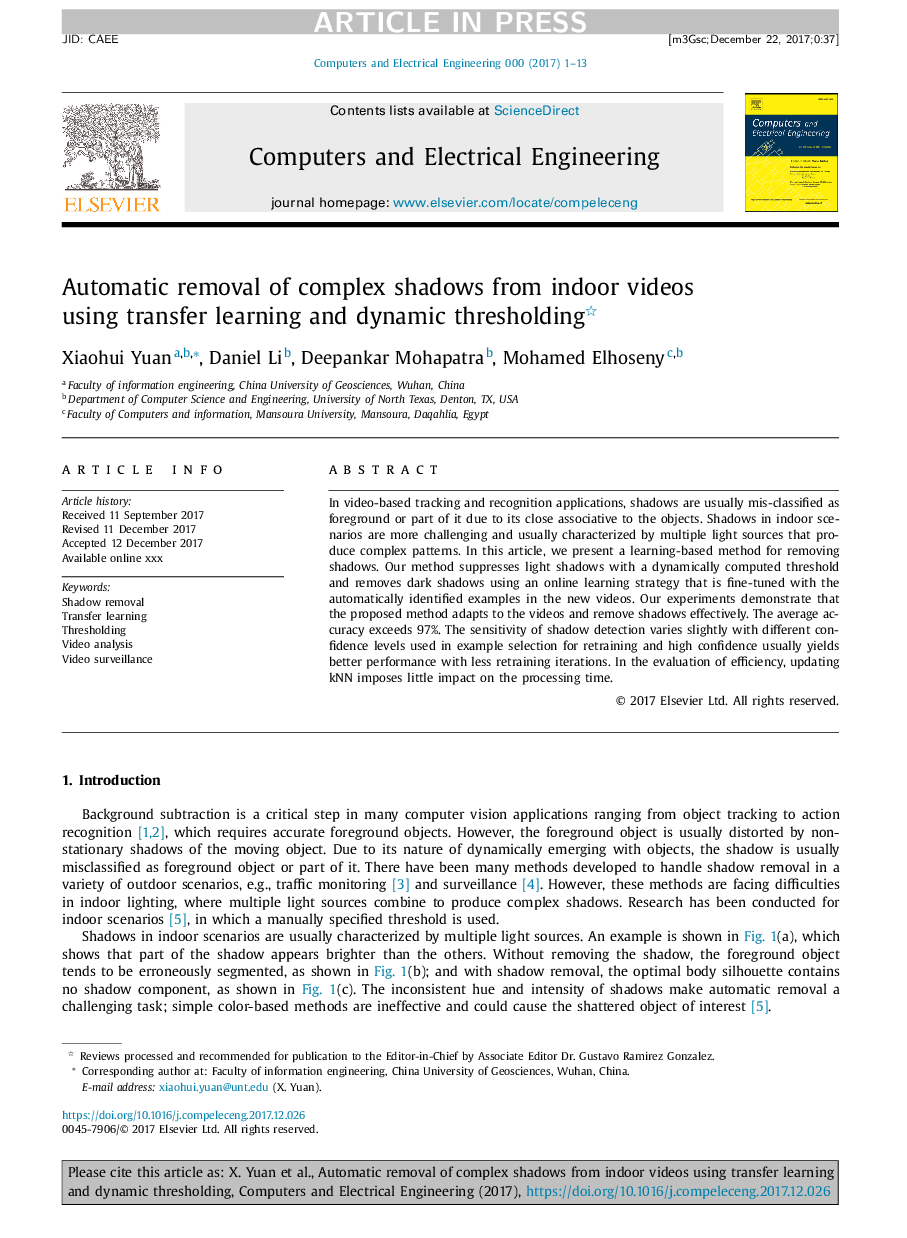| Article ID | Journal | Published Year | Pages | File Type |
|---|---|---|---|---|
| 9952248 | Computers & Electrical Engineering | 2018 | 13 Pages |
Abstract
In video-based tracking and recognition applications, shadows are usually mis-classified as foreground or part of it due to its close associative to the objects. Shadows in indoor scenarios are more challenging and usually characterized by multiple light sources that produce complex patterns. In this article, we present a learning-based method for removing shadows. Our method suppresses light shadows with a dynamically computed threshold and removes dark shadows using an online learning strategy that is fine-tuned with the automatically identified examples in the new videos. Our experiments demonstrate that the proposed method adapts to the videos and remove shadows effectively. The average accuracy exceeds 97%. The sensitivity of shadow detection varies slightly with different confidence levels used in example selection for retraining and high confidence usually yields better performance with less retraining iterations. In the evaluation of efficiency, updating kNN imposes little impact on the processing time.
Related Topics
Physical Sciences and Engineering
Computer Science
Computer Networks and Communications
Authors
Xiaohui Yuan, Daniel Li, Deepankar Mohapatra, Mohamed Elhoseny,
